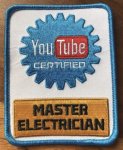They seem pretty expensive. I looked around and they are 25 - 50 cents a piece.
They are, however speed of installation makes them better than wire nuts. I'll be honest, for lighting circuits, especially now with LEDs, I am not too worried about backstab connections coming loose. Light fixtures often have a push in connector for connecting one light to another with Romex anyway.
With receptacles, I prefer to install pigtails around the side screws in the shop, and connect them to a Wago that is already been installed on the branch wiring during rough-in. Three simple push in connections, tuck the wires in the box, screw in the device. If you opt for this method, I find it is better to pre tail the ground wires with insulated wire... It is one more safeguard against ground or arc fault breakers tripping with novice installers.
That is one place where you will makeup time over wire nuts and putting loops in the branch circuit wiring to go around the side screws... It also allows you to check all of your branch circuit wiring before the sheetrock goes up, and you do not have to remove any temporary wire nut connections.
The other huge benefit to permanently making up hot neutral and ground connections in a box during rough in is that if it gets covered up, you're not totally hosed with everything downstream of it being dead.
You would need three three port connectors for a typical single gang receptacle, two if you just put a Buchanan crimp on the ground wires and leave one long. Opting for the 3 though will save you time on your knees or laying on the floor trimming out baseboard receptacles.
Bigger than a three gang switch box, you're going to need the 8-port push in Wago or Ideal wire connector... lever locks only go up to 5 ports.
A combination of backstabs, lever locks, push in connectors, Buchanan crimps, and wire nuts, all used in the most optimal places, will result in the fastest install.
Where are you finding the 221 series lever locks for $0.25 a piece? Is that like a 500 or 1000 piece contractor pack? Is that just the 2 port?


